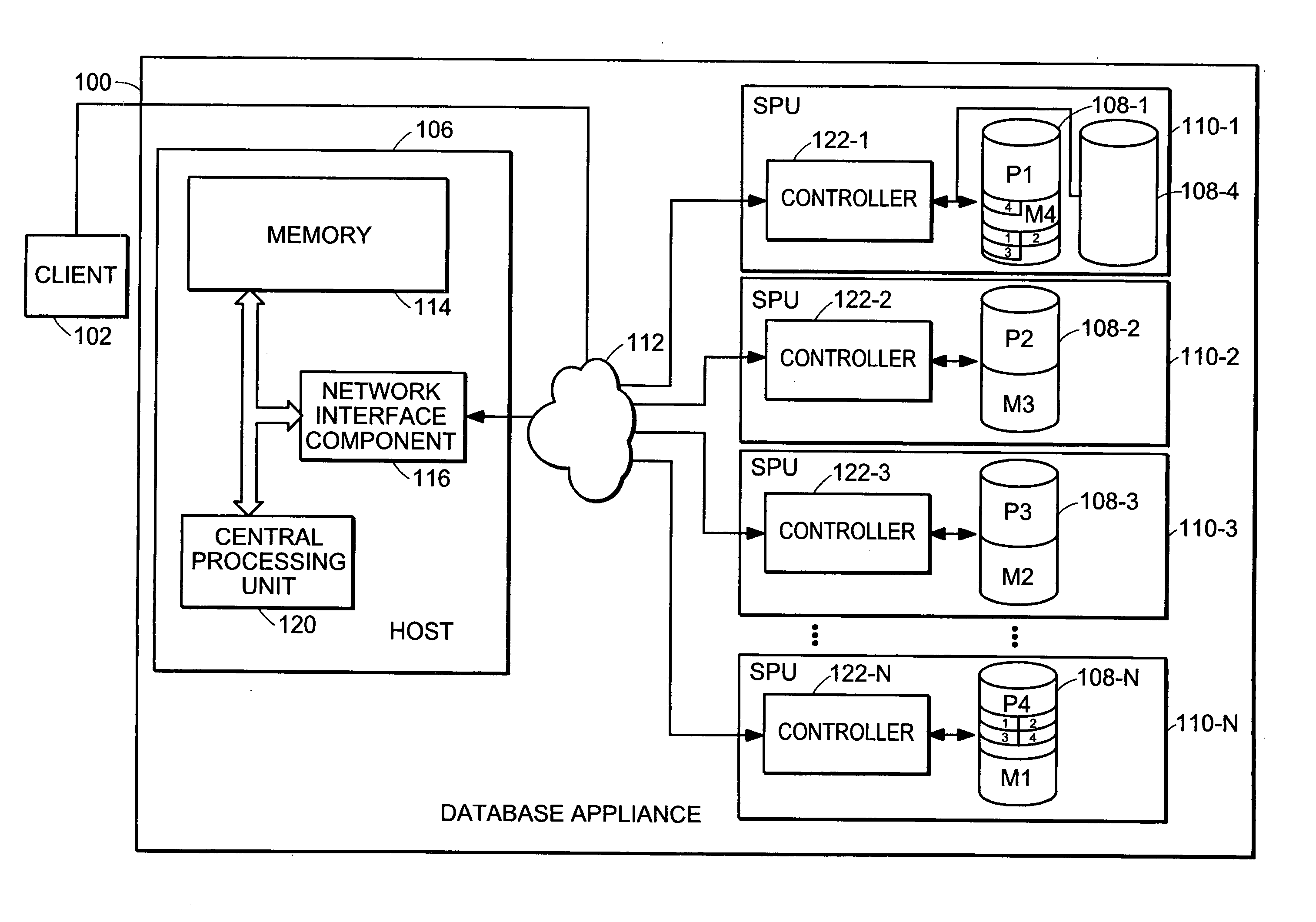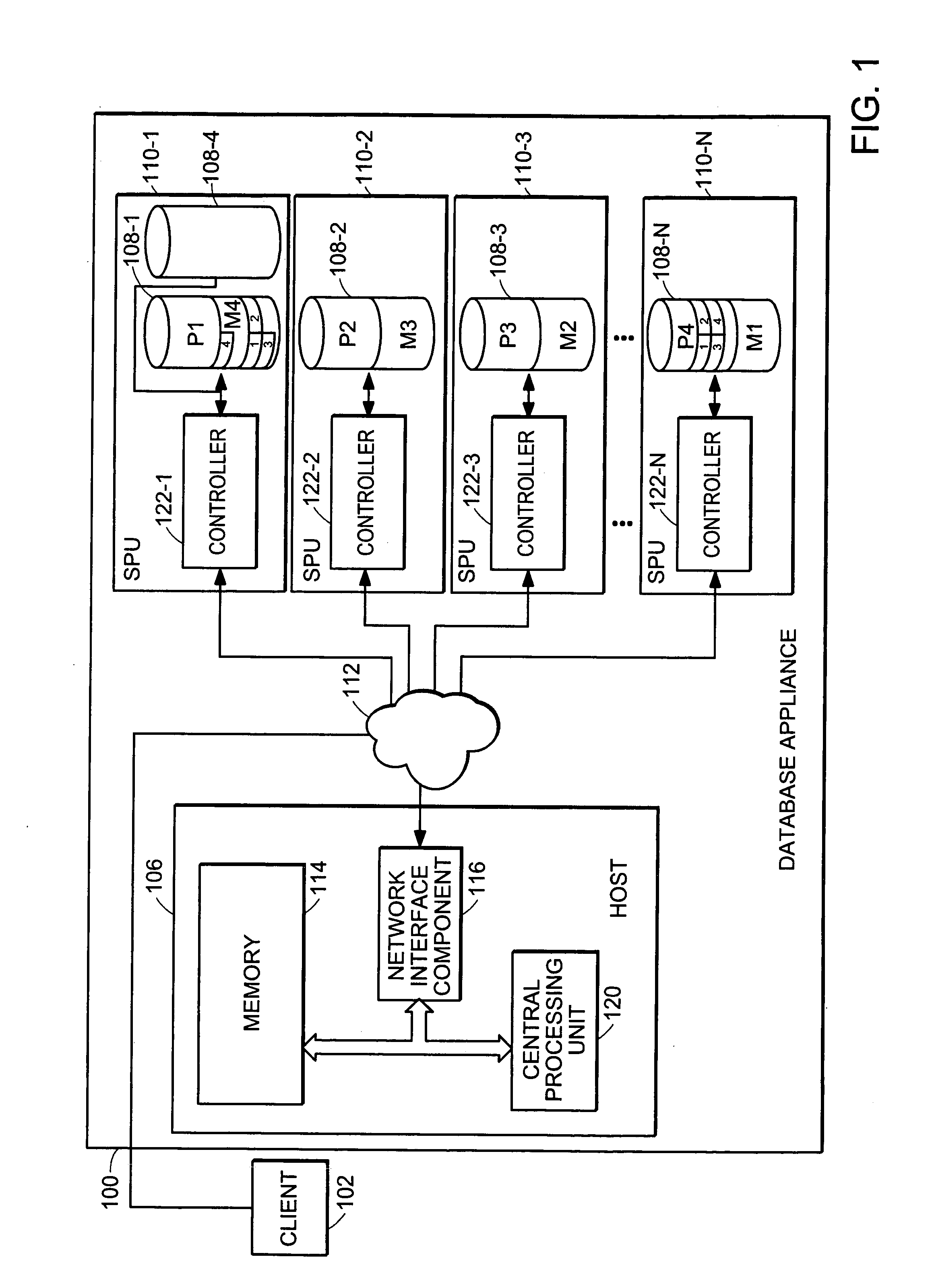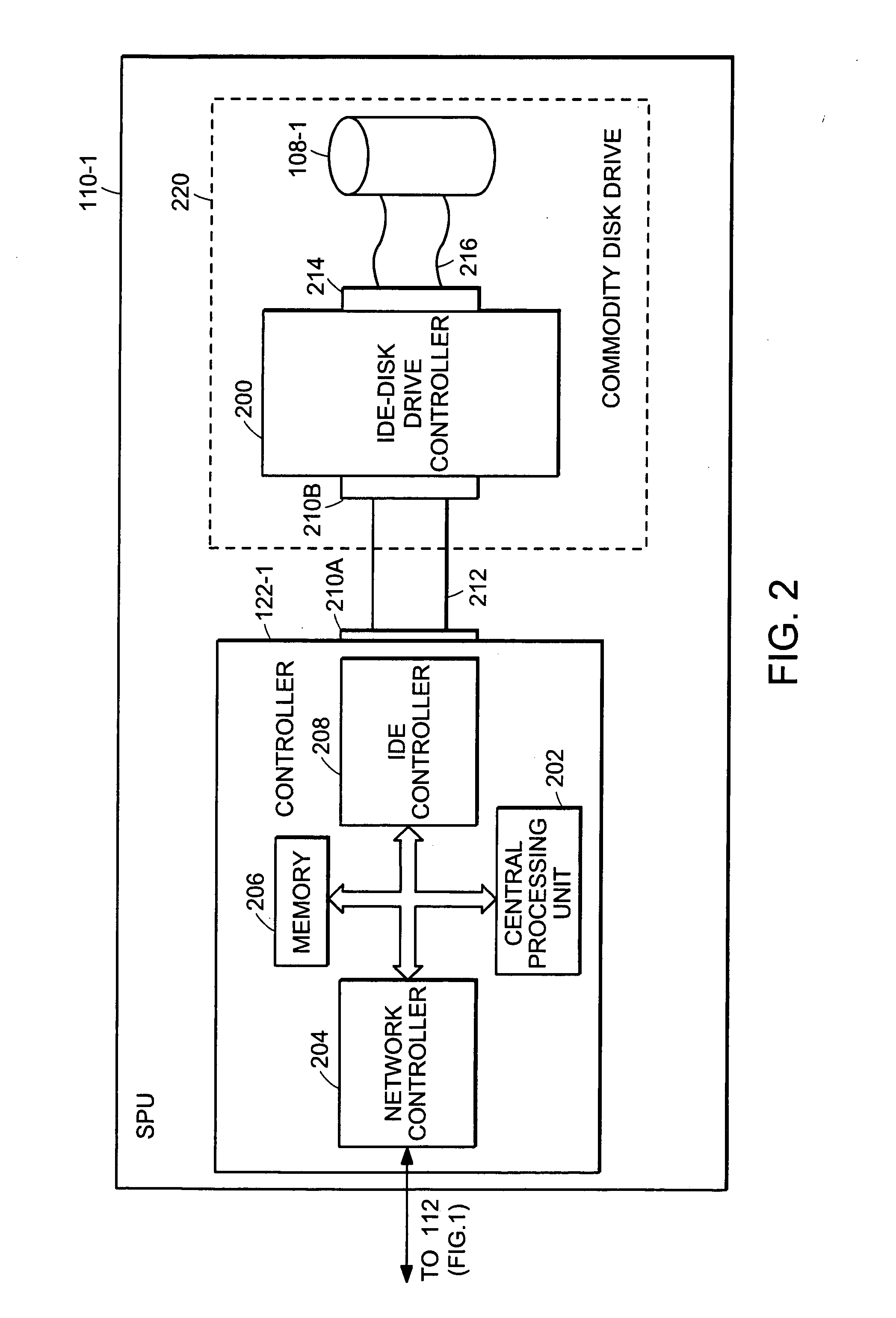Disk mirror architecture for database appliance with locally balanced regeneration
a database appliance and locally balanced technology, applied in error detection/correction, redundant hardware error correction, instruments, etc., can solve problems such as inaccessibility of the whole system, and achieve the effect of increasing the general speed of the system
- Summary
- Abstract
- Description
- Claims
- Application Information
AI Technical Summary
Benefits of technology
Problems solved by technology
Method used
Image
Examples
Embodiment Construction
[0027] A description of preferred embodiments of the invention follows.
[0028]FIG. 1 is a block diagram of a database appliance 100 according to the principles of the present invention. The database appliance 100 includes a host 106 for processing database requests received from a client 102 and a plurality of disk drives 108-1, . . . , 108-n storing the database. Each of the plurality of disk drives 108-1, . . . 108-n is coupled to a respective Controller 120-1, . . . 120-n. Each Snippet Processing Unit (SPU) 110-1, . . . 110-n forms a processing assembly that includes a respective controller 122-1, . . . 122-n and at least one disk drive. . In the embodiment shown, controllers 122-2, 122-3 and 122-n are each coupled to one disk drive and controller 122-1 is coupled to two disk drives. Each SPU is coupled to a host 106 through a data communication network. 112. The SPU performs the primitive functions of a query to the database, controlling all aspects of reading from and writing t...
PUM
 Login to View More
Login to View More Abstract
Description
Claims
Application Information
 Login to View More
Login to View More - R&D
- Intellectual Property
- Life Sciences
- Materials
- Tech Scout
- Unparalleled Data Quality
- Higher Quality Content
- 60% Fewer Hallucinations
Browse by: Latest US Patents, China's latest patents, Technical Efficacy Thesaurus, Application Domain, Technology Topic, Popular Technical Reports.
© 2025 PatSnap. All rights reserved.Legal|Privacy policy|Modern Slavery Act Transparency Statement|Sitemap|About US| Contact US: help@patsnap.com



